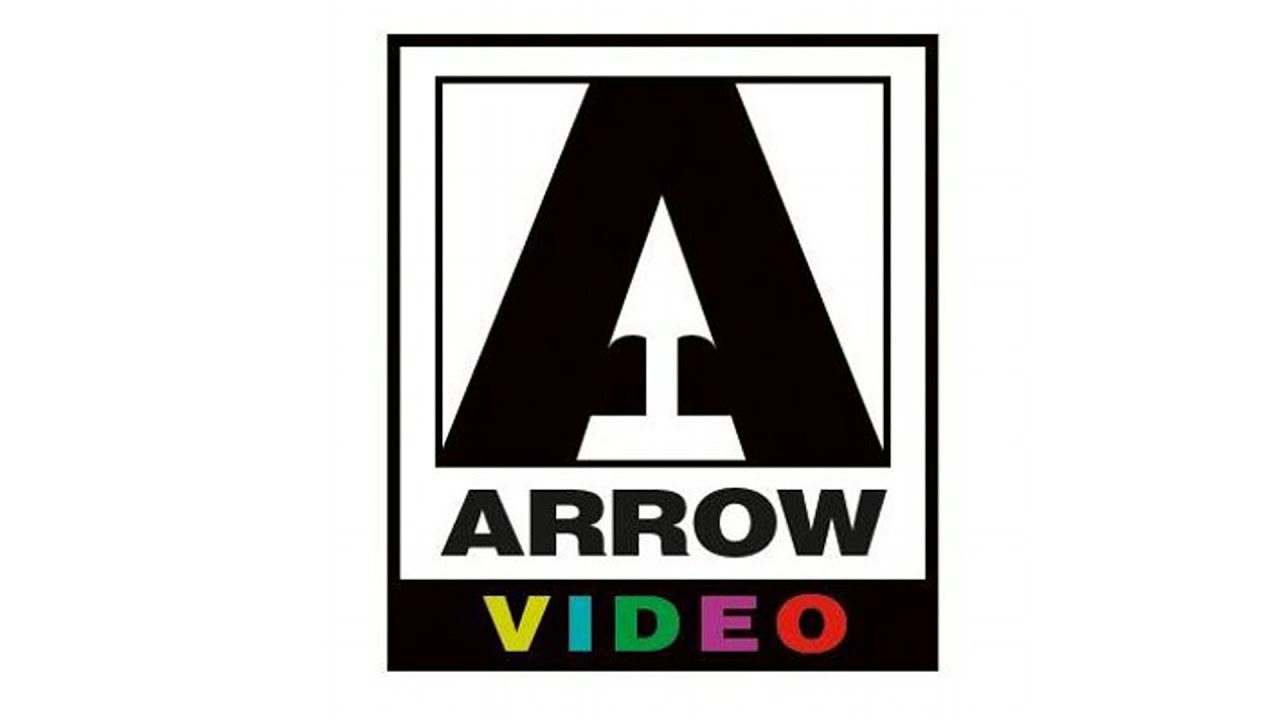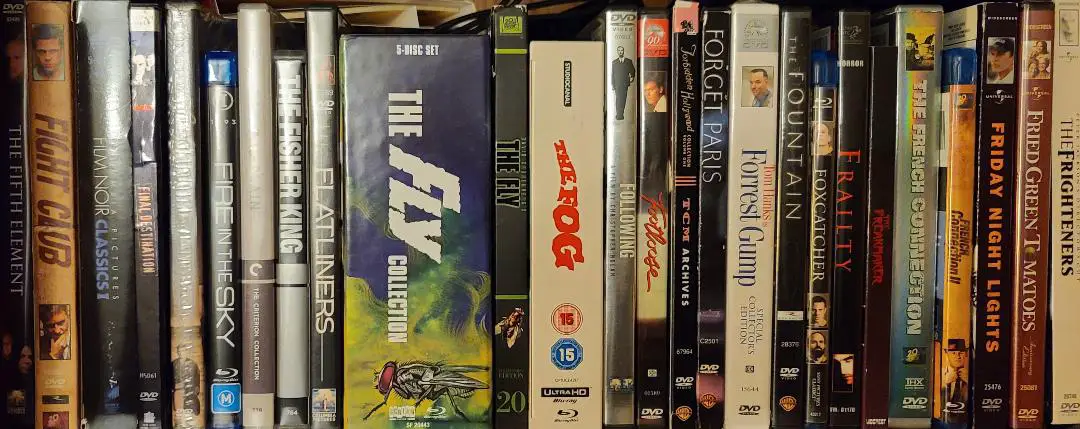Editor’s Note: Welcome to Film Obsessive’s newest feature series, “Off the Shelf.” Each Saturday our writers share the joys of physical media, from reviews of new 4K and Blu-ray releases to reflections on the treasured media they’ve come to collect and cherish over the years.
Should you go region-free? In the physical media collecting world, that is an enormous question that each of us collectors has to answer. If you are new to collecting, this may be the first time you have seen this question; also, if you’re new, welcome! You are going to experience the highest highs and the lowest lows. The world of physical media collecting can be your best friend and your worst enemy.
Now, I know I’m not selling physical media collecting that well, but I want to be honest about the world. As with any hobby, there is a cost involved. Depending on what you’re collecting, it can get rack up rapidly. What constitutes a physical media collection is different for everyone. Some people gather rare VHS tapes others have a complete collection of SteelBooks, while others collect limited editions. The world is vast, but your collection is your own. No one can tell you what you should and shouldn’t add to your collection. That’s the beauty of it.
This isn’t going to be an article about the difference in boutique labels, limited versus standard editions, bundles, and single releases. That’s a topic for another time. Instead, I would like to talk about disc regions and the benefits (and cons) of going region-free.
Since the advent of DVD, region coding has been at the forefront of home video releases. Just because you own a disc, that doesn’t guarantee it will work on a player. In all retail stores in North America, DVDs sold have a Region 1 code. The disc will play in DVD players coded for the United States and Canada. If you buy a disc off eBay, for example, and the disc came from a European manufacturer, there is the possibility it will not play in your United States player.
The same goes with Blu-ray. Across the world, there are three regions established where a Blu-ray disc can play, identified as A, B and C. Each case housing the disc has an identifier to assist where the disc will work. Interestingly, 4K discs (for the most part) are region-free and will play on any 4K players. Go figure.
Anyway, I’m not here to give you a crash course on the intricacies of region coding; instead, let’s talk about the topic at hand: region-free players.
By now, you probably get the gist that a region-free player allows you access to any-and-all discs from around the world. Big deal, you might think. “What’s the difference if I get a disc from North America or import from Europe” you might question. To be honest, a lot.
Nothing about the film itself will be different: the 4K limited edition of Battle Royale released by Arrow Video in the United Kingdom is identical to the standard edition. What is different about the limited edition is that you get the two versions of Battle Royale II on Blu-ray only. As this is a UK-only release, if you reside in North America with a US player, the two discs for the Battle Royale sequel are useless to you. As I mentioned earlier, you will have access to the 4K discs of the original film, but half of the limited edition will collect dust without a region-free player. Arrow Video eventually released a standard edition of Battle Royale, only including the 4K discs, which would be worth importing if you are not region-free as they should play on a North American player.
When it comes to imports, it’s not always just the discs that make a difference. The difference between the Battle Royale limited and standard editions is immense. The standard edition houses only the two cuts of the original film—the limited edition contains those cuts, plus the two previously mentioned versions of Battle Royale II, PLUS the CD soundtrack to Battle Royale. The limited-edition also includes a book, trump cards, a poster, and more. The standard edition doesn’t come with all of these bells and whistles.
If you’re a fanatic about Battle Royale, you might want to have this limited edition on your shelf. If you’re not region-free, though, there isn’t a point to getting the limited edition, as you will be unable to play Battle Royale II. And, I know Battle Royale II is despised by most fans, but if you’re a completist, this would be the set for you… if you are region-free.
The Battle Royale set that Arrow Video offers is not the only instance where one territory gets a stellar package while another region does not. There are hundreds of releases scattered throughout the regions that offer different extras and packaging, among other things. There are many options for a single release out there—you have to find the one that’s right for you.
Let’s get to the bad news: with more options comes the potential for more spending. In this current climate, prices are on the rise everywhere. And this is no different when it comes to shipping. If you’re in North America, there are distributors importing titles from other parts of the world; as shipping prices go up, the physical media release prices get marked up also. That limited edition of Battle Royale? That cost a pretty penny no matter how you got it. Every extra feature costs money. The limited-edition packaging that houses the additional goodies raised the prices exponentially. If you go region-free, it’s easier to fall into financial peril with no barriers between releases and their regions.
I can tell you that happened to me. Before going region-free, I never looked at releases for the European or Asian markets. I couldn’t play them in my North American player, so there was a safety net for me and my spending. With no barrier in place after going region-free, I found myself shopping and spending more than I would have. Over time, I have found myself scouring distributors for the latest releases. Sometimes I purchase films I haven’t heard of due to the movie sounding good or a bountiful supply of bonus features or and this is the worst because it’s a limited edition.
Another negative about going region-free comes from labels re-releasing titles like they’re giving out candy. In your quest for films to add to your collection, you might find an OOP (Out Of Print) title that you can import from Europe. Now that you have it, all is right with the world. Then, a label obtains the rights and releases that film in the States at half of what you paid, with more features and a better transfer. It may seem like a far-fetched scenario, but it happens. And it happens more than you might think. So, with a region-free player, you must remain vigilant of what you have and what’s coming soon. Sometimes, too many options can be a bad thing. And with the number of titles worldwide, it’s easy to lose more money than you expect, and the labels and rightsholders know it.
Labels prey on people like myself. They give me something I didn’t know I wanted and then strike fear into my heart about missing out. This article isn’t about my weaknesses or spending habits. We can discuss FOMO (Fear Of Missing Out) in a separate article.

So, should you go region-free? That’s a question only you can answer. Even with my shortcomings in spending, I am glad that I went region-free. I have exceptional releases in my collection that I wouldn’t have with a North American player. Lately, I have been working to curb my spending with mixed results. Even with my compulsive spending habits, region-free allowed me to open myself up to see how the rest of the world handles physical media releases. And to that end, I’m glad to have gone region-free.




I have only had one instance where I purchased a Region B or C disc to have it come out almost within a week on a Region A, and that was MAKE WAY FOR TOMORROW, which I bought from Eureka! and it felt like less than a week later that Criterion announced a remaster for them onto Blu-Ray. Otherwise, purchasing the other region discs has worked out fine and even were a lot cheaper than getting an OOP US copy.
Eureka! is one of the best boutique labels out there. There are many labels where they get a rights to a film elsewhere, but the US rights are with held by a different label. This is where a lot of titles outside a region come in to play. Each label offers (potentially) different extras, or maybe even a different transfer. There’s a lot of factors for possibly going region-free, and each person’s needs are different.